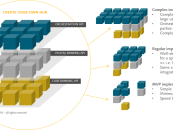
Booming Cross-Border E-Commerce Activity in Asia Presents Opportunities for European Merchants
by Fintechnews Switzerland September 12, 2023International e-commerce spending by JCB cardholders based in Asia increased by 52% between 2021 and 2022, presenting a significant opportunity for merchants in Europe as shoppers across the region show increasing willingness to purchase goods online from foreign businesses, a new paper by the Japanese credit card company shows.
The report, titled “Click into Place: Unpacking Card Abandonment”, provides insights on online spending from Asia, sharing the latest research and data on e-commerce trends to help businesses boost e-commerce sales and stand out from the crowd.
According to the report, cross-border e-commerce activity increased substantially last year, with India leading the region with a staggering five-fold growth, followed by Indonesia and Vietnam, where cross-border e-commerce more than doubled between 2021 and 2023. In Hong Kong and the Philippines, global e-commerce spending grew by around 80%, while China, Taiwan and Thailand saw growth of about 50%.
Further growth is expected in the future as the cart abandonment rate in Asia’s e-commerce industry is currently the highest in the world, standing at over 84% as of March 2023 compared with about 70% for customers globally.
High cart abandonment in Asia suggests that there is potential for more expansion in the region if merchants are able to solve customers’ friction points and improve experience, the report says.

image via freepik
Addressing cart abandonment
Cart abandonment is the act of a shopper adding an item to an online shopping cart but leaving the website without completing the purchase. It represents a significant amount of lost revenue for merchants in the online space.
According to JCB, there are several cause of cart abandonment, with the first common one being the payment journey. In Asia, complicated checkouts and unexpected payment processes are cited as a reason for abandoning carts, with 55% of online shoppers in the region identifying long login and sign-up forms as a key source of frustrated.
To address this paint point and boost sales, merchants must enhance customer experience by streamlining their checkout process with a well-designed website. They should also leverage advanced technology and design practices to balance security with user experience, using for example pre-fill information and tokenization to speed up the checkout process, as well as technology like 3DS authentication to increase consumer trust. Such improvements not only increase immediate sales and conversion rates but also foster long-term brand loyalty, the report says.
The second cause of cart abandonment outlined in the JCB report is unmet customer expectations around how they can pay, and how easy it is to do so.
Understanding customer psychology is vital to reduce cart abandonment in e-commerce, the report says. To cater to local preferences, merchants should offer multiple languages and payment currencies, provide a personalized customer journey, and ensure that payment processes are seamless across both mobile and desktop platforms.
This is critical become mobile purchases are on the rise, representing 43% of e-commerce sales globally in 2023. In Asia-Pacific (APAC), that share is even higher, with mobile commerce constituting 75.8% of sales in 2022.
Finally, the third and final cause of cart abandonment outlined in the report is the failure to react to external factors, such as market trends and changes in consumer behaviour.
During the COVID-19 pandemic, e-commerce surged, especially in Asia, due to increased internet and mobile device access, the report says. However, the global economic downturn has somewhat hindered e-commerce growth and altered customer behaviors.
This has led many consumers to start using online carts as a modern form of window shopping, adding items for future consideration or price comparisons. This behavior, which may lead to cart abandonment, is likely to rise with economic concerns and decreased impulse buying, it warns.
To counter this, merchants should offer competitive pricing and employ strategies like remarketing and non-intrusive exit-intent pop-ups. They should also bolster customer confidence with reviews and security guarantees.

image via Unsplash
Cross-border e-commerce on the rise
Over the past couple of years, cross-border e-commerce has witnessed significant growth, driven by the proliferation of the Internet and mobile devices, improved logistics, payment innovations and the rise of global e-commerce platforms such as Amazon, Alibaba and eBay.
With disposable income rising in developing markets, e-commerce merchants and marketplaces will continue pivoting towards them, pushing cross-border online shopping to new heights.
According to Juniper Research, cross-border e-commerce transaction values will reach US$1.6 trillion this year. Through 2028, that number is projected to grow by more than twofold to US$3.4 trillion.
In comparison, domestic e-commerce transaction values are set to grow by 48% over the same period, implying that much of the growth in the e-commerce payments market will in the cross-border area.
In 2022, around 168 million Chinese customers had engaged in cross-border import e-commerce, growing from 155 million the previous year, data from market research and analytics platform Statista show. The trade value of cross-border import business reached approximately 34 trillion yuan (US$4.6 billion) that year.
In Southeast Asia, about a quarter (23%) of consumers said they are shopping more at merchants based in other countries in the region since the start of the pandemic, while a similar number (22%) are shopping more in stores outside of Southeast Asia, a 2021 study by ACI Worldwide and YouGov reveals.
Featured image credit: Edited from freepik





